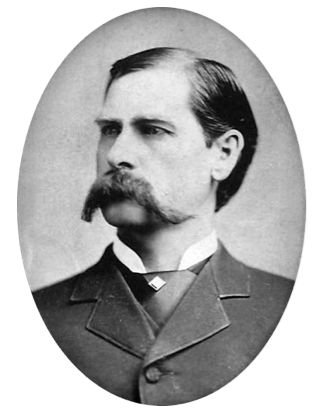Wyatt Earp: Famed Lawman of the American West
Part 1: Making a Reputation Wyatt Earp is one of the most famous names in the history of the American Southwest, mainly for his participation in the Gunfight at O.K. Corral. He was born the year of the Mexican Cession and died at the beginning of the Great Depression. In his life, he saw highs and lows, success and failure, plenty of opportunities to enforce the law, and a large amount of questionable economic activity. Earp is known first and foremost as a man of the law. He was deputy town marshal in Tombstone, Arizona, on the day of the Gunfight at O.K. Corral. He was also a deputy sheriff in nearby Pima County. He had previously served as a constable, a city policeman, and a deputy U.S. Marshal. He was also, however, widely affiliated with gambling. He served as a bouncer at several gambling houses and also owned several saloons. Enchanted with the prospect of getting rich quick, he followed the gold and silver booms around the country. Born in 1848 in Illinois, he grew up in the area and, after getting married, lived in Missouri for a time. In the early 1870s, he went to the booming cattle town of Dodge City, Kan., and then to another cowtown, Wichita. As a young man, he traveled in questionable circles. He was arrested several times in saloons, along with Morgan, one of his brothers. When he got to Kansas, however, he joined the ranks of law enforcement. He was a marshal in Wichita and a policeman in Dodge City. He followed one outlaw more than 400 miles into Texas. 
It was in 1878, in Dodge City, that Earp met John Henry "Doc" Holliday, with whom he would have several adventures in law enforcement in the next few years, most notably the Gunfight at O.K. Corral. That shootout took place in Tombstone, Arizona Territory, and it was to Tombstone that Wyatt Earp went in 1879, at the behest of his older brother Virgil, who was the town constable in nearby Prescott. Tombstone was near a recently discovered silver lode. In September 1879, Earp and his wife, Celia Blaylock, moved to Tombstone and bought into a mine there. They arrived when the town population was 1,000; the city was only nine months old, having a population of 100 when it was founded on March 5, 1879. Also moving to Tombstone were Earp's brothers Virgil and James, along with their wives. About the same time in Tombstone arrived Doc Holliday, flush with winnings from gambling that he had been successful at in Prescott. Crawley Dake, the U.S. Marshal for the Arizona Territory, appointed Earp deputy U.S. Marshal for the Tombstone mining district. Earp was also about this time a shotgun messenger on stagecoaches transporting strongboxes for Wells Fargo. In the summer of 1880, Earp answered the call from a U.S. Army Captain, Joseph Hurst, to help track down six mules that had been stolen from Camp Rucker, an Army post in Cochise County. Earp and his brothers Virgil and Morgan found the mules at the ranch of Frank McLaury, a rustler who was one of the Cochise County Cowboys. The mules were property of the U.S. Army, and so the theft of the mules was a federal offense; but the power and influence of the Cowboys was such that they did not return the mules or face any punishment for the theft of the mules. The Cowboys and the Earps traded angry words, including a death threat, but no violence ensued. This was Wyatt Earp's first run-in with the Cowboys; it would not be his last. Next page > Gunfight and Boomtowns > Page 1, 2 |
|
Social Studies for Kids
copyright 2002–2025
David White




